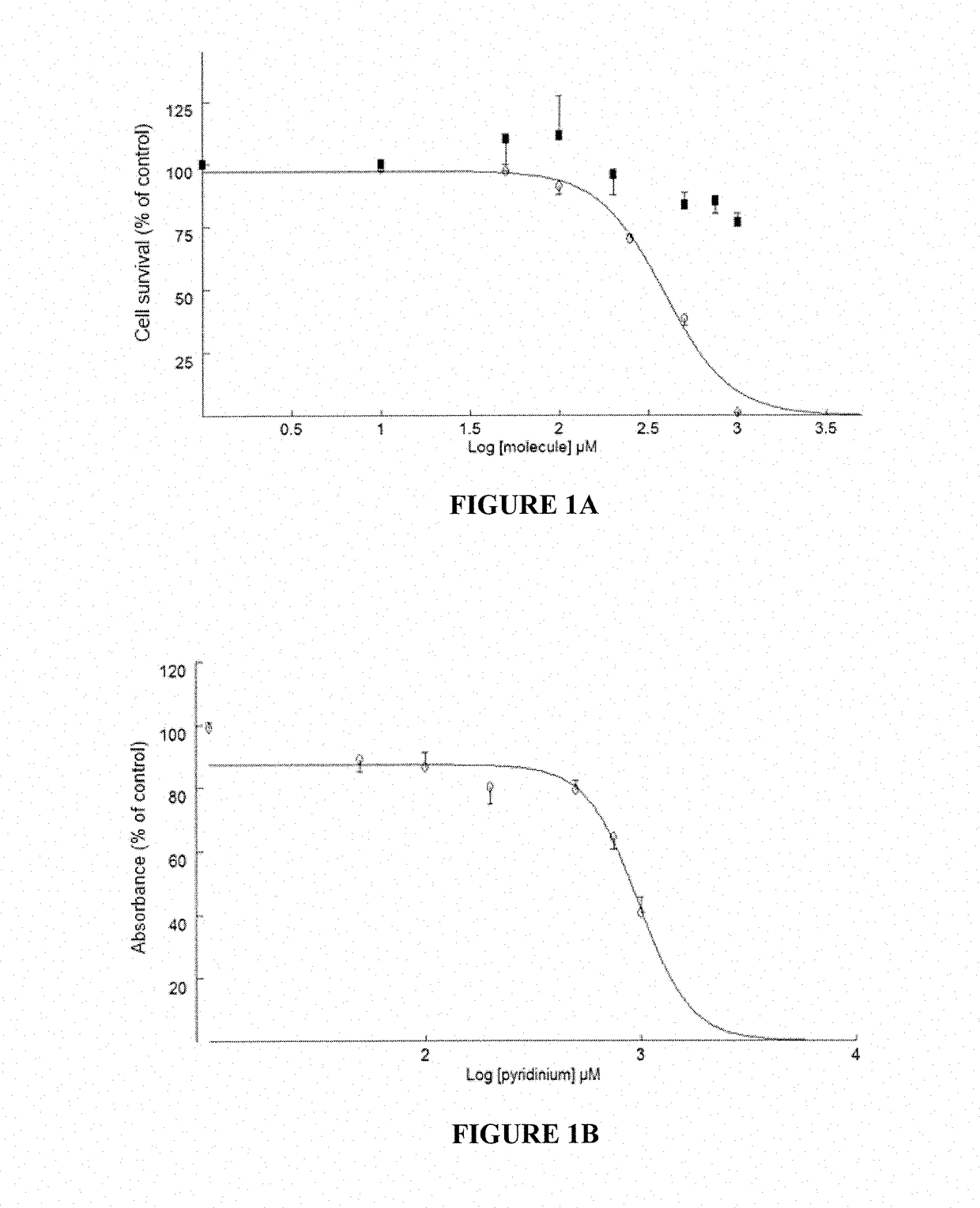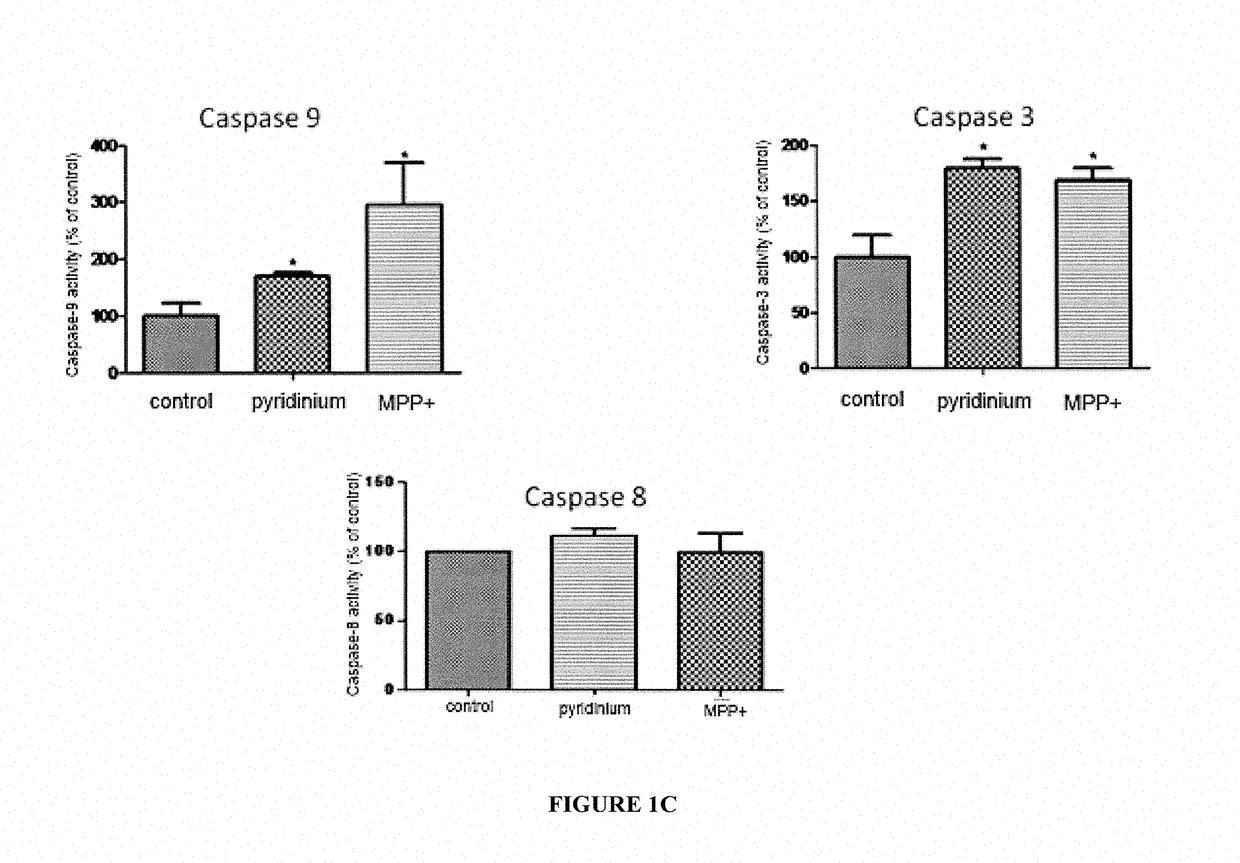Chemical model of a neurodegenerative disease, method for preparation and uses of same
a neurodegenerative disease and chemical model technology, applied in the field of chemical model development and use for the study of neurodegenerative diseases, can solve the problems of parkinson's disease, acute toxicity of 6-ohda, and inability to produce and achieve the effects of neither the formation of lewy bodies nor the appearance of lesions in all areas of the brain
- Summary
- Abstract
- Description
- Claims
- Application Information
AI Technical Summary
Benefits of technology
Problems solved by technology
Method used
Image
Examples
examples
Part A: Chemistry
[0282]The MPP+ was purchased in the form of iodide salt from Sigma-Aldrich (CAS: 36913-39-0). The furosemide was purchased from TCI Europe N.V. (CAS number: 54-31-9).
1—Synthesis of Furosemide Pyridinium
[0283]The furosemide pyridinium was synthesized from furosemide as described in Laurencé et al., Tetrahedron, 2011.
Synthesis of 4-Chloro-2-[(2,5-dimethoxy-2,5-dihydro-furan-2-ylmethyl-amino]-5-sulfamoyl-benzoic acid (compound (1))
[0284]In an undivided glass cell fitted with two carbon electrodes, furosemide (250 mg, 0.75 mmol), ammonium bromide (61 mg, 0.6 mmol), and tetraethylammonium tetrafluoroborate (81 mg, 0.4 mmol) were dissolved in methanol (10 mL). The reaction mixture was kept under magnetic stirring and a constant current of 30 mA until 2.5 F / mol was consumed. The solution was transferred into a flask and the methanol was evaporated at reduced pressure. The obtained residue was re-suspended in ethyl acetate and the inorganic salts were removed by filtration....
PUM
| Property | Measurement | Unit |
|---|---|---|
| incubation time | aaaaa | aaaaa |
| incubation time | aaaaa | aaaaa |
| incubation time | aaaaa | aaaaa |
Abstract
Description
Claims
Application Information
 Login to View More
Login to View More - R&D
- Intellectual Property
- Life Sciences
- Materials
- Tech Scout
- Unparalleled Data Quality
- Higher Quality Content
- 60% Fewer Hallucinations
Browse by: Latest US Patents, China's latest patents, Technical Efficacy Thesaurus, Application Domain, Technology Topic, Popular Technical Reports.
© 2025 PatSnap. All rights reserved.Legal|Privacy policy|Modern Slavery Act Transparency Statement|Sitemap|About US| Contact US: help@patsnap.com



